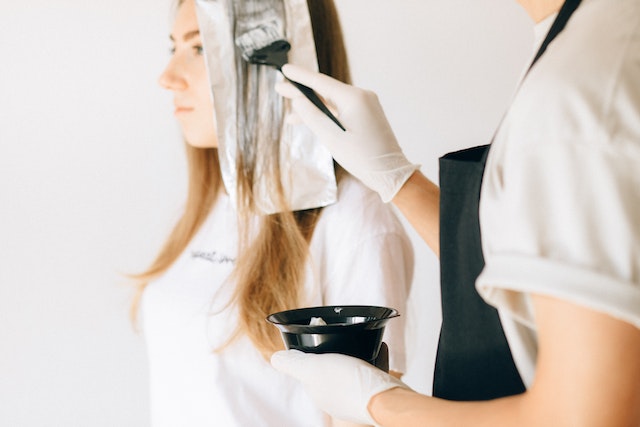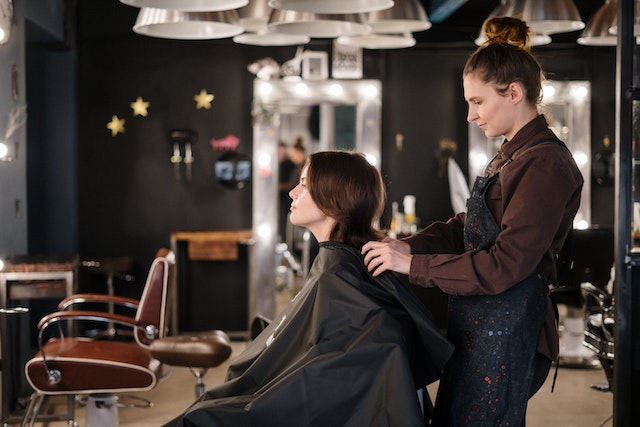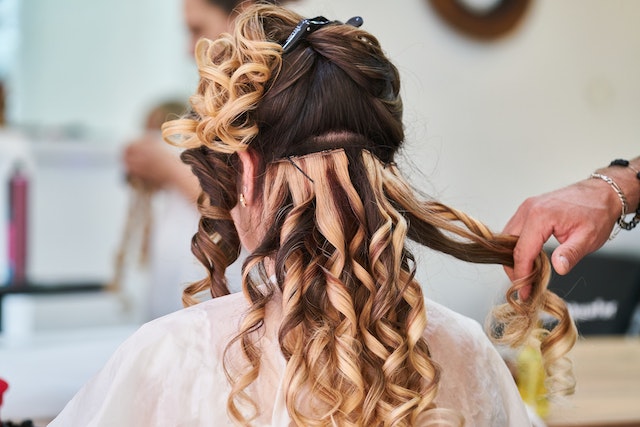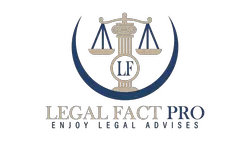
What is the Legal Age to Dye Your Hair?
The contents of this web page are for informational and educational purposes only, and nothing you read is intended to be legal advice. Please review our disclaimer before taking action based upon anything you read or see.
While coloring your child’s hair may seem like a pleasant hobby and opportunity for bonding, it may not be a good idea in certain circumstances. Additionally, there are no strict restrictions on when you can dye your hair in the United States. However, there are a few guidelines and rules that the majority of certified hairdressers would want to abide by. Manufacturers often state the legal age for using hair color products as 16 and older.
This is due to some factors. First, many permanent hair dyes, particularly, include chemicals that could be bad for growing bodies. Second, allergic reactions and negative consequences from hair coloring may be more severe in younger individuals.
Many hair color producers virtually restrict hair stylists and beauticians from using their products on customers who have yet to turn 16 to reduce the possibility of injury. This shields the hair dye producers from claims made by upset parents and kids who negatively respond to the color and the stylists who use it.
Furthermore, even though putting color on a client’s hair under 18 won’t result in jail time or a fine, most hairstylists still won’t take the chance. In reality, scheduling customers under 18 for hair color or bleaching services is strictly prohibited in most professional salons in the United States.
Any salon that consents to color an adolescent’s hair before they turn 16 endangers both themselves and the youngster. After all, the salon’s liability insurance won’t be responsible for any problems arising from the stylist failing to heed the manufacturer’s warning. Come along as we elaborate more on this below.
Hair Dyeing Safety Guidelines

People who dye their hair should follow these safety guidelines:
Take an allergy test first
Always do a test on a tiny section of hair if this is your first time using a synthetic hair color. Reactions like redness and itching might be modest or severe, such as breathing difficulties.
Consult a doctor immediately if one of these happens, and refrain from using any chemical hair coloring in the future.
Keep your scalp safe.
Apply a petroleum foundation to your whole scalp to protect it before using any chemical hair color. As a result, there is a lower chance that chemicals will enter the scalp. Serious health consequences may result if they penetrate your scalp and enter your bloodstream. Additionally, be careful to properly cleanse your scalp after dying.
Know the risks
A recent NIH study connected regular usage of semi-permanent and irreversible hair dyes to breast cancer. The number of African American women increased by more than 40%. The stronger chemicals in darker hair colors are thought to cause this.
Other malignancies, such as bladder and lymphoma cancer, have also been linked to darker hair tints. They pose a greater danger if they enter blood arteries in the scalp and absorb there since this may affect hormones and lead to cancer. Think of safer alternatives like vegetables or natural colors like henna.
Legal Age Requirements for Hair Dyeing
There are no strict restrictions on when you may color your hair in the US. However, there are a few guidelines and rules that the majority of certified hairdressers would want to abide by. Manufacturers often state the legal age for using hair color products as 16 and older.
Parents must also remember that children have extremely thin hair readily harmed by chemicals in certain hair dyes, such as ammonia, chlorine, hydrogen peroxide, and others.
After all, adolescent and child hair aren’t as mature as that of adults. Kids’ and teenagers’ hair is best suited to transient colors covering the locks because of their delicate shaft and fine structure.
You may also use temporary dyes like hair chalk or Kool-Aid dye for colorful pleasure if you want to color your child’s or teen’s hair. Just ensure it’s permitted before using them throughout the school year.
Regulatory Policies for Hair Dyeing
The US Food and Drug Administration (FDA) has also modified the rules governing color additives. As a result, it no longer permits the inclusion of lead acetate in cosmetic products used for scalp hair coloring. The FDA’s conclusion that the material no longer supports a “reasonable assurance of no harm” was the foundation for this change.
Additionally, the FDA announced a final rule on October 30, 2018, to change the restrictions on color additives such that lead acetate was no longer allowed to be used in cosmetics used for coloring scalp hair. Furthermore, the final regulation becomes effective on January 6, 2022.
Hazards of Dyeing Hair at a Young Age
Some Hazards of Dyeing Hair at a Young Age include:
Excessive Processing
Ammonia or compounds that are comparable to it, as well as peroxide, are often used in permanent hair dyes. Your hair loses color due to the ammonia in the hair shaft and the peroxide neutralizing the natural pigment.
Overusing these chemicals on your young hair can make it lose its shine and break quickly. And in certain severe circumstances, water will be able to remove it.
Reactions to Allergens
It is typical for allergic responses to hair colors. This is true, particularly given that paraphenylenediamine, a frequent allergy, is a component of permanent hair colors.
PPD and other elements found in dyes make young individuals with contact dermatitis more vulnerable to responses. Furthermore, hair dyes should not be used to color the hair of those who suffer from skin problems like eczema.
Allergy, contact dermatitis, redness, and inflammation on your scalp or other tender regions like your forehead and neck are less serious complications of irreversible dyes.
Conjunctivitis
One of the negative effects of young people dying their hair is conjunctivitis. The chemicals may touch your face’s delicate areas if you don’t care while dying your hair.
Pink eye or conjunctivitis may develop in certain circumstances when the chemicals in hair colors come into contact with your eyes. In other situations, it results in inflammation and excruciating agony.
Alternatives to Hair Dyeing for Young People

Some Alternatives to Hair Dyeing for Young People include:
Carrot juice
If you would like to give your hair a reddish-orange color, try using carrot juice. Depending on your hair color, the tint may remain for a few weeks.
Beet juice
Use beet juice rather than carrot juice if you like a deeper red color with cooler undertones.
Coffee
You may benefit more from a cup of brewed coffee than a caffeine spike. Additionally, it could hide some gray hair and help you tint your hair a little darker.
Pros and Cons of Coloring Hair at a Young Age
| Pros | Cons |
| Changes the way you appear. | Your hair may be harmed. |
| Strengthens and adds volume to your hair | Maintenance may be pricey. |
| It highlights your fashion qualities | To retain color, it must be done every two weeks or monthly. |
| Easily accessible online | It may irritate the scalp. |
| Eliminates dandruff | Prolonged use might lead to cancer |
| Shines and glosses hair | It strips the hair of its natural texture. |
| It intensifies blonde or brunette hair | It raises the risk of contracting conjunctivitis. |
| It gives your hair a more intriguing and colorful appearance. |
Potential Health Risks of Hair Dye
Playing with hair colors may be thrilling and entertaining, but doing it too often might harm your hair. The potential for conjunctivitis and cancer risks are two health dangers of hair dye.
Additionally, it could cause allergic responses due to certain compounds, such as paraphenylenediamine. This might result in skin irritation, redness, and an asthma attack in extreme circumstances.
Hair color ingredients such as resorcinol, lead acetate, and arsenic sulfate may cause chronic renal issues.
Alternatives to Hair Dye
Some Alternatives to Hair Dye include:
- Lemon juice
- Sage
- Chamomile tea
- Walnut husk
- Henna Powder
- Black Tea
Conclusion
In conclusion, most hair experts concur that the dangers of dyeing a teen’s hair outweigh the benefits. Parents should remember that children have extremely thin hair readily harmed by chemicals in certain hair dyes, such as ammonia, chlorine, hydrogen peroxide, and others.
After all, adolescent and child hair aren’t as mature as that of adults. Kids’ and teenagers’ hair is best suited to transient colors covering the locks because of their delicate shaft and fine structure.
My Advice
Teenagers should avoid using permanent hair dyes and instead turn to natural hair coloring options to color their hair safely. To prevent issues, you should also take the appropriate measures before and after your hair is dyed.
Utilizing hair color sparingly or not as all may help prevent issues. Another choice is safe, natural hair coloring options. Avoid bright colors at all costs. Bright hair colors are often discouraged in schools because they may be seen as disturbing.

I’m a driven and accomplished law graduate and post-graduate, passionate about sharing my legal expertise via my blog. I hold a Bachelor’s degree in Law from the University of London (UK) and a Master’s in Law from the University of Derby (UK). Both gave me the foundational knowledge and skills to excel in my chosen career path.
Throughout my academic journey, I have gained extensive knowledge in various fields of Law, including Corporate and Business Law in the USA, Criminal Law, International Law, US Copyright law, and most importantly, American Constitutional law.


Comments are closed.